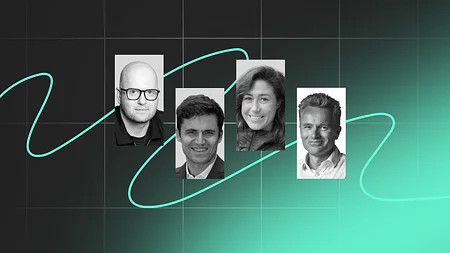What next for the BNPL phenomenon?

Buy Now Pay Later (BNPL) has been taking the world by storm.
With purchases in the space set to hit the $100 billion mark in 2021, let’s take a look at why the phenomenon kicked off, where we are with a new year round the corner and what the future might hold.
What the hell is BNPL?
BNPL offers consumers the option to pay for stuff in instalments. You’ve probably noticed it at checkouts for a variety of online retailers over the past year or so. Names like Klarna, Clearpay and Laybuy. Ring any bells?
The sector enjoyed some serious growth in 2020 thanks, in large part, to Covid. Turns out a global pandemic will make cash-strapped shoppers flock to an online credit purchase service in their droves. Who knew?
In truth, BNPL has been around for some years. But it arrived in a big way last year.
What’s the point?
The benefits to the consumer are obvious. Sale ending soon and an absolute bargain is slipping through your fingers? Hello Klarna. Wary of traditional credit card providers? Hi Clearpay. No time to save for that fetching linen jacket before the ball on Friday? Howdy Laybuy.
The benefits to the consumer are obvious.
Let’s not forget just how easy the service is to use. Companies have worked hard to make sure their customer experience is as frictionless as possible. Rewards and extra incentives are offered to tempt prospective users and signup is near-effortless versus some of the credit card incumbents.
But what about the merchants? Well, increased revenue for starters. Digital River found ‘brands in the U.K. and Europe saw a 3 percent to 10 percent lift in gross revenue after adding a buy now, pay later option’. Average order value (AOV) is also likely to go up and there’s a big opportunity to build brand loyalty by offering the service.
So where are we now?
Young consumers are getting a lot bolder in their spending. So much so in fact that BNPL has been labelled the “future of millennial finance”. According to Forbes: ‘The percentage of Gen Zers in the US using BNPL has grown six-fold from 6% in 2019 to 36% in 2021. Millennials’ use of BNPL has more than doubled since 2019 to 41%. Gen Xers’ adoption more than tripled’. Crazy, crazy numbers.
Young consumers are getting a lot bolder in their spending.
In the last year, some really big players have gotten involved. From Square to Paypal by way of Monzo and Mastercard, the sector is primed to go full supernova.
And what does the future hold?
It could be ‘goodnight Vienna’ for the credit card industry. Klarna offers a virtual credit card that users can spend in any store online. In Sweden, customers can pay with Klarna in real-life stores. Wondering what the impact might be if that really takes off? Well, luckily for you we explored it in this episode of the Fintech Insider Insights podcast.
Monzo’s move into BNPL was a bit like when Bowie made that drum and bass album except for UK fintech - a bit of a surprise and the jury's still out on how good it is. We got some experts together to debate whether they’re set to ‘professionalise’ the space or risk getting cut adrift in a sea of rivals.
That is - if the Financial Conduct Authority doesn’t enforce long-overdue regulation first. Touted for introduction in late 2022 at the earliest, debt campaigners hope it’ll be enough to avoid another Wonga-type situation.
Whilst a lot of the regulation conversation has centred around the UK, experts have pointed out that the whole BNPL sector is currently operating in a ‘regulatory grey area’. In the US, for instance, 40% of consumers who used BNPL last year have missed more than one payment.
Let’s wrap up
And that’s the story. At 11:FS, we love keeping our ear to the ground when it comes to all things fintech. Check out our podcasts and other content for thoughts on BNPL and much more.



